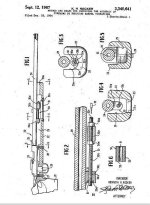Combinations
Ryan/Vibe:
I think the correct answer is 30 combinations (29, if the 1/2 oz weight must be on the end). Let me explain. It has been a long time since I took Math 101, so correct me if I have misunderstood your use of factorials for the arrangement of weights on the tuner. My recollection is a factorial would be used to compute the ordering of elements giving you a unique string. In this case, the order of the weights (the rearranging of the weights along the string) is not important, unless they interact differently with the vibration of the barrel, which we all hope is not the case. Ammo is expensive enough, not to have to try hundreds of combinations to find the "parallel node".
I believe, in this case, we were given 6 weights ranging from 1/2 oz. to 5 oz. (six weights total), and the 1/2 oz. weight must be used at the end of the string of weights.
The sum of the weights adds up to 15 1/2 ounces.
Long and short of it is, if you can configure the weights from 1/2 to 15 1/2 ounces, in increments of 1/2 ounce. that gives 29 combinations. I believe, in this case, you are looking for the optimal aggregate weight added to the tuner, and the order in which the weights are placed on the tuner does not matter.
The use of a Factorial analysis such as 6! (6 x 5 x etc) would yield 720 combinations, if you used all 6 weights, and if you were looking to define the unique combinations within a string. It is also true you could arrange the weights in the sum of the factorials from 6! to 1!. My question is why would you?
If we found 8.5 ounces were the optimal weight, would rearranging the order of the 5, 3, and 1/2 ounce weights, effect the "parallel node"?
My fond recollection for the use, and application of factorials, is mostly associated with my gambling days in Vegas, and playing Yahtzee on rainy days in the country.
Again, it has been a very long time since I played with combinations and permutations, so kindly bring me up to speed, if I missed the point.
BTW: This has been quite a thread. Back to school and back to the range. You have all added a great deal to the discussion. Thanks and hoping this device really works miracles! Good shooting to you. Doug


